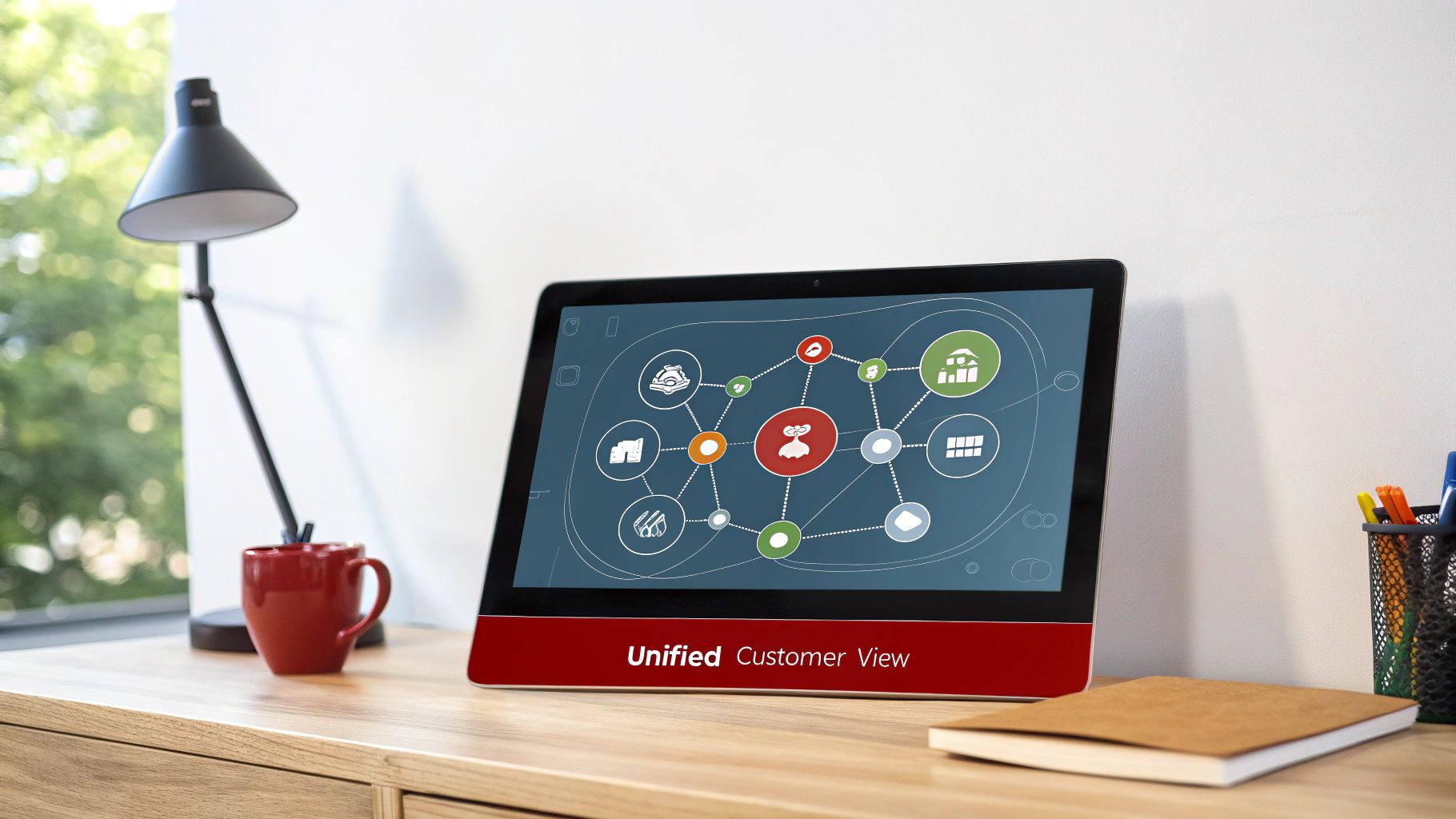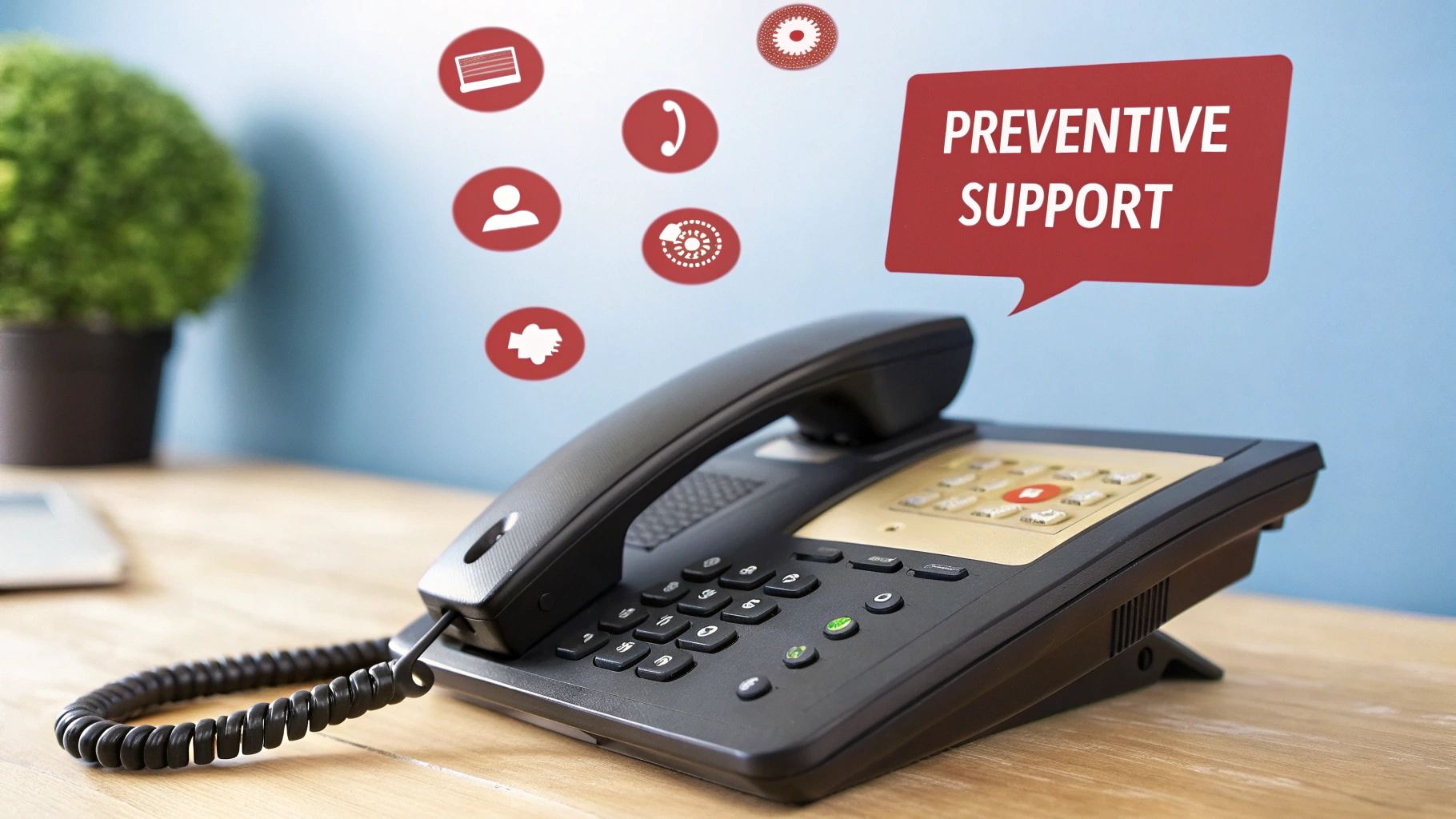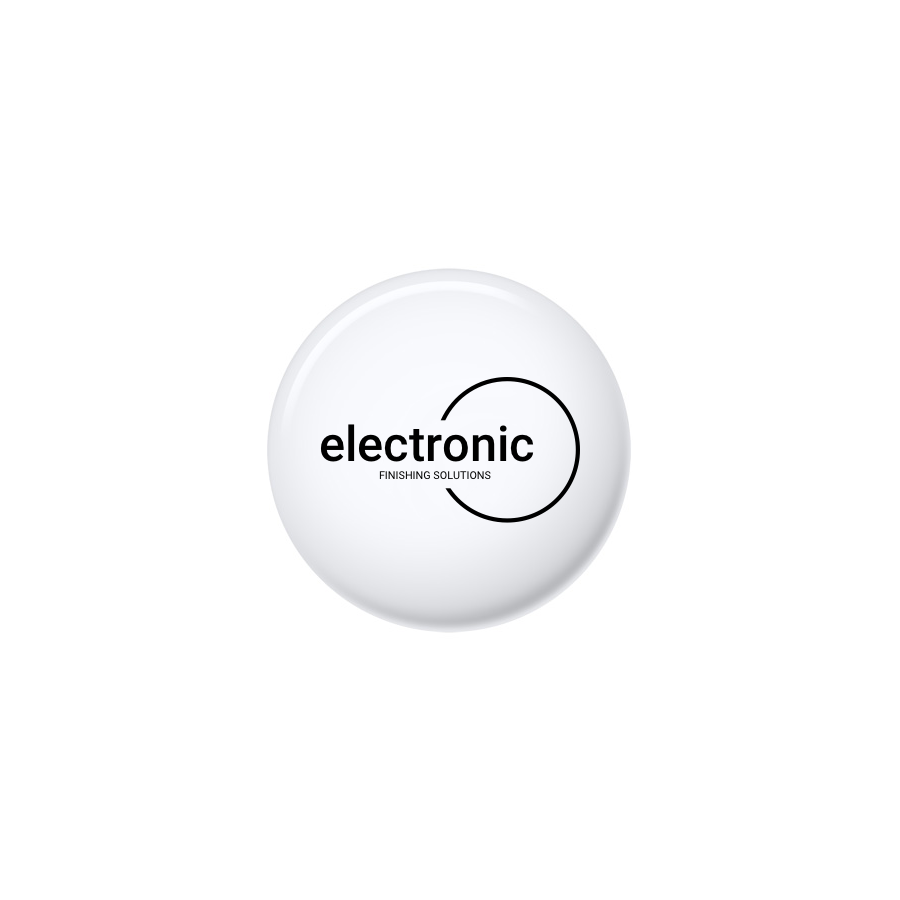In today's hyper-competitive market, a generic approach to customer relationship management is a direct path to disengagement, churn, and missed revenue. Customers now expect personalized, seamless, and proactive interactions at every touchpoint. Relying on outdated or surface-level strategies means you're not just falling behind; you're actively losing ground to competitors who have adapted to this new standard of customer engagement. The difference between thriving and merely surviving often comes down to the sophistication of your CRM execution.
This article moves beyond the basics, offering a curated list of advanced customer relationship management tips designed to fundamentally transform your operations. We will provide actionable blueprints for building stronger, more profitable, and lasting customer relationships. Instead of broad theories, you will find specific, implementation-focused guidance that your marketing, sales, and service teams can use immediately to drive tangible results.
From creating a truly unified customer view with a centralized data platform to strategically optimizing for customer lifetime value (CLV), these insights will equip you to not just manage relationships, but to master them. Prepare to explore how to:
- Unify disparate data sources for a single source of truth.
- Leverage hyper-personalization through advanced segmentation.
- Automate communication without sacrificing a human touch.
- Implement proactive service that anticipates customer needs.
- Develop robust feedback loops for continuous improvement.
- Ensure a consistent experience across all channels.
- Invest in targeted team training that elevates customer success.
- Optimize every interaction for long-term value.
Let's dive into the strategies that will define CRM excellence, turning your satisfied customers into powerful, loyal brand advocates.
1. Implement a Centralized Customer Data Platform
Effective customer relationship management begins with a deep, unified understanding of your customers. Fragmented data, siloed in different departments like marketing, sales, and customer service, creates a disjointed customer experience. Implementing a centralized customer data platform (CDP) solves this by consolidating all customer information from various touchpoints into a single, comprehensive system. This creates a true 360-degree view of each customer, empowering your teams to deliver personalized interactions and make informed decisions.

Think of how industry leaders leverage this. Amazon’s powerful recommendation engine works because it draws from a unified profile of your search history, past purchases, and even items you’ve only browsed. Similarly, Starbucks’ mobile app integrates purchase history, loyalty data, and saved preferences to offer personalized rewards and promotions, fostering a stronger connection with its customers.
How to Implement a Centralized Data Strategy
Adopting a CDP is a significant strategic move that requires careful planning and execution for maximum impact. A phased approach mitigates risk and ensures a smoother transition.
- Start with a Pilot Program: Instead of a company-wide overhaul, test the CDP within a single department, such as the marketing or customer support team. This allows you to identify challenges, refine processes, and demonstrate value on a smaller scale before a full rollout.
- Establish Data Governance: Before migrating data, create clear data governance policies. Define who can access, modify, and use customer data, and establish standards for data quality, privacy, and security. This framework is crucial for maintaining data integrity and compliance.
- Prioritize Integration: Your CDP must seamlessly connect with your existing technology stack. When considering how to implement a centralized customer data platform, it's vital to research and choose the right software, such as identifying the best CRM solutions for call centers that offer robust integration capabilities.
- Train Your Teams: Technology is only as good as the people who use it. Provide comprehensive training on not just how to navigate the platform, but also how to interpret the data to uncover actionable insights.
- Audit and Refine: Regularly audit your data for quality and consistency. Cleanse outdated or duplicate records and continuously refine your data collection strategies to ensure you are capturing the most relevant information.
2. Leverage Customer Segmentation for Personalization
Treating all customers the same is a missed opportunity for building meaningful connections. Customer segmentation involves dividing your customer base into distinct groups based on shared characteristics, behaviors, or preferences. This strategic approach enables targeted marketing campaigns, personalized product recommendations, and tailored customer service interactions that resonate deeply with specific customer needs, making it one of the most effective customer relationship management tips.

This method is powerfully demonstrated by leading brands. Netflix segments users by viewing history to offer hyper-relevant content recommendations, keeping them engaged on the platform. Similarly, Sephora creates detailed beauty profiles for its customers based on skin type, brand preferences, and purchase history to provide customized product suggestions and marketing, fostering loyalty in a competitive market.
How to Implement a Customer Segmentation Strategy
Effectively segmenting your audience allows you to move from broad communication to precise, impactful conversations. A successful strategy requires a thoughtful and iterative process.
- Start with Key Segments: Avoid overcomplicating your initial efforts. Begin by identifying 3-5 broad but meaningful segments based on high-level data like demographics (age, location), purchasing behavior (high-value customers, recent buyers), or engagement level (active users, dormant accounts).
- Combine Data Types: Go beyond the numbers. While quantitative data (purchase frequency, average order value) is crucial, supplement it with qualitative insights from surveys, customer feedback, and support interactions to understand the "why" behind customer actions.
- Ensure Segments Are Actionable: A segment is only useful if you can act on it. Each group should be distinct enough to warrant a unique marketing or service approach. Ask yourself: can we realistically create tailored campaigns or offers for this segment?
- Test and Refine Messaging: Develop different messaging, offers, and content for each segment and test their effectiveness. Use A/B testing to determine which approaches generate the highest engagement and conversion rates, then refine your strategy based on the results.
- Regularly Review and Update: Customer behavior and preferences change over time. Schedule regular reviews of your segment definitions to ensure they remain relevant and accurate. What defined a "loyal customer" last year may need to be updated based on new data.
3. Automate Customer Communication Workflows
Automating communication workflows is one of the most powerful customer relationship management tips for scaling your engagement efforts without sacrificing quality. This strategy uses predefined triggers and rules to send targeted messages to customers at optimal times throughout their journey. This ensures consistent, timely communication while freeing up your team to handle more complex, high-value interactions that require a human touch.
Consider how leading companies master this. Shopify’s abandoned cart recovery sequences are a prime example, automatically reminding shoppers about items they left behind and often including a small discount to encourage purchase completion. Similarly, Airbnb sends automated booking confirmations, pre-arrival instructions, and post-stay review requests, creating a seamless and supportive experience for travelers without manual intervention. These systems, popularized by platforms like HubSpot and Mailchimp, are fundamental to modern marketing and service.
How to Implement Automated Communication Workflows
Building effective automation requires a deep understanding of your customer's lifecycle and a commitment to continuous improvement. A strategic approach ensures your messages feel helpful, not robotic.
- Map the Customer Journey: Before building any workflow, visually map out every stage of your customer's journey, from initial awareness to post-purchase advocacy. Identify key moments where automated communication would add value, such as onboarding, milestone celebrations, or re-engagement prompts.
- Segment Your Audience: Don't send the same message to everyone. Use the data in your CRM to segment your audience based on behavior, purchase history, demographics, or engagement level. This allows for highly personalized and relevant automated campaigns.
- Maintain a Human Touch: Automation shouldn't feel impersonal. Use personalization tokens to include the customer's name, reference past purchases, and have messages come from a real person's name and email address. A simple, personal signature can make a significant difference.
- Monitor and A/B Test: Continuously track engagement metrics like open rates, click-through rates, and conversions for your automated messages. A/B test different subject lines, send times, and content to optimize performance and ensure your workflows are achieving their goals.
- Provide Clear Opt-Outs: Always include a clear and easy-to-find unsubscribe or opt-out option in every automated communication. This respects customer preferences and is essential for compliance with regulations like GDPR and CAN-SPAM.
4. Implement Proactive Customer Service Strategies
Superior customer relationship management tips often focus on moving beyond reactive problem-solving. Proactive customer service involves anticipating customer needs and addressing potential issues before they escalate or even occur. This strategic shift from a reactive "firefighting" model to a preventive customer care approach not only enhances customer satisfaction and loyalty but also significantly reduces the volume and cost of inbound support requests. By identifying and resolving friction points ahead of time, you create a seamless and positive customer journey.

This methodology is championed by customer-centric leaders. For instance, Zoom proactively monitors its network performance and sends notifications to users about potential connectivity issues that could affect their meetings, allowing them to take action beforehand. Similarly, Adobe leverages usage analytics to identify users who might be struggling with a particular feature, triggering targeted offers for tutorials or training resources. This preventive support builds trust and demonstrates a deep commitment to customer success.
How to Implement a Proactive Service Model
Transitioning to a proactive service model requires a cultural shift and the right technological foundation. It’s about building systems to listen for early warning signs and empowering your team to act on them decisively.
- Develop Customer Health Scores: Use your CRM data to create a "health score" for each customer based on factors like product usage, support ticket history, and engagement levels. This score helps you prioritize proactive outreach to customers who show signs of disengagement or potential churn.
- Create Pre-emptive Educational Content: Analyze common support inquiries and customer pain points. Develop a library of FAQs, video tutorials, and knowledge base articles that address these issues before customers have to ask for help. Promote this content through onboarding sequences and in-app messages.
- Leverage Predictive Analytics: Implement tools that use predictive analytics to forecast potential customer problems. These systems can analyze vast datasets to identify patterns that correlate with future issues, such as a drop in usage after a software update, signaling a need for proactive intervention.
- Train Staff on Early Warning Signs: Your customer-facing teams are your first line of defense. Train them to recognize subtle cues and early warning signs of customer frustration or confusion during routine interactions. Empower them to escalate potential issues or offer proactive assistance without waiting for a formal complaint.
5. Utilize Customer Feedback Loops for Continuous Improvement
One of the most powerful customer relationship management tips is to stop viewing feedback as a one-time event and start treating it as a continuous cycle. A customer feedback loop is a systematic process for gathering, analyzing, and acting on customer input. This ongoing cycle of collection, analysis, implementation, and follow-up ensures your business evolves in direct response to customer needs, driving both product innovation and service excellence.
Consider how industry leaders have embedded this into their core operations. Slack’s product development is heavily influenced by its comprehensive feedback system, where user input directly shapes new features and improvements. Similarly, Airbnb's two-way review system not only builds trust but also provides hosts with actionable data to enhance the guest experience, leading to higher quality stays across the platform.
How to Implement a Customer Feedback Loop Strategy
Building an effective feedback loop requires a structured approach that goes beyond simply collecting survey responses. The goal is to create a living, breathing system that fuels constant improvement and demonstrates to customers that their voice is valued.
- Diversify Your Collection Channels: Don't rely on a single method. Use a mix of channels to capture a wide spectrum of feedback, including Net Promoter Score (NPS) surveys, post-interaction polls, social media listening, and direct conversations. This provides a more holistic view of the customer experience.
- Prioritize Feedback Intelligently: Not all feedback is created equal. Develop a system to prioritize suggestions based on factors like the frequency of the request, its potential impact on revenue or retention, and the feasibility of implementation. This ensures your resources are focused on changes that matter most.
- "Close the Loop" with Customers: This is the most critical and often-missed step. After you implement a change based on feedback, communicate it back to the customers who suggested it. A simple "We listened, and here's what we did" email or update can transform a customer into a loyal advocate.
- Empower Your Frontline Teams: Train your customer service, sales, and support staff to be active listeners. Equip them with the tools and processes to not just solve problems but also to document and escalate valuable customer insights to the appropriate internal teams.
- Establish a Customer Advisory Board: For strategic, high-level feedback, consider creating a customer advisory board. This small group of dedicated customers can provide invaluable insights into your product roadmap, market positioning, and long-term strategy, offering a direct line to your most engaged users.
6. Develop Cross-Channel Consistency
In today's interconnected world, customers interact with your brand across a multitude of platforms, from your website and social media to physical stores and mobile apps. Cross-channel consistency ensures that this journey is seamless and cohesive, providing a unified brand experience at every touchpoint. This approach eliminates friction, builds customer trust, and reinforces your brand identity, making every interaction feel like a continuation of the same conversation.

Think about Disney's MagicBand system, which seamlessly links a guest's park tickets, hotel room key, and payment methods into one wearable device. This creates a frictionless experience across their entire resort. Similarly, Sephora allows customers to build a shopping cart online and then access it in-store via their mobile app, where a sales associate can help them find the products. This level of integration is a cornerstone of modern customer relationship management tips and strategies.
How to Achieve Cross-Channel Consistency
Developing a truly integrated customer experience requires a strategic blend of technology, process, and training. It’s about breaking down internal silos to present a single, unified front to the customer.
- Map the Customer Journey: Begin by creating detailed maps of how customers interact with your brand across all channels. Identify potential pain points, disconnects, and opportunities for a smoother transition between touchpoints.
- Establish Universal Brand Guidelines: Create and enforce clear brand guidelines for messaging, tone of voice, and visual identity across all platforms. Whether a customer is reading a tweet, an email, or talking to a chatbot, the brand persona should feel consistent.
- Integrate Your Technology: Use a CRM or CDP to share customer data across all departments and systems. When a customer service agent can see a customer's recent online purchases and marketing interactions, they can provide far more relevant and personalized support.
- Train for an Omnichannel Mindset: Your teams need to understand the entire customer journey, not just their individual silo. Train staff on how to use cross-channel tools and empower them to guide customers smoothly from one channel to another.
- Regularly Audit and Test: Continuously test the user experience across different channels. Place an online order for in-store pickup, initiate a customer service chat on mobile, and call the support line to ensure the experience is as seamless in practice as it is on paper.
7. Invest in Customer Success Team Training
A powerful CRM system is only as effective as the team using it. Investing in comprehensive training for your customer success team is not a one-time event but a continuous strategy that directly impacts retention, satisfaction, and growth. This goes beyond basic software tutorials; it involves equipping your team with a deep understanding of your product, advanced communication skills, strategic problem-solving abilities, and a firm grasp of key customer success metrics. This holistic approach transforms your team from reactive problem-solvers into proactive partners dedicated to your customers' success.
This principle is powerfully demonstrated by companies renowned for their customer-centric cultures. Zappos is famous for its intensive, multi-week training program that immerses new hires in its core values and customer service philosophy, empowering them to go above and beyond for customers. Similarly, Salesforce utilizes its own Trailhead platform to provide continuous, gamified learning paths, ensuring its customer success managers are always up-to-date on product features and best practices for driving customer value.
How to Implement a Robust Training Program
Building a world-class customer success team requires a structured and multifaceted training approach. A well-designed program ensures your team has the confidence and competence to handle any customer interaction effectively, a cornerstone of any successful customer relationship management tips and strategies.
- Develop Role-Specific Training Paths: Avoid a one-size-fits-all approach. A new onboarding specialist needs different training than a senior account manager. Create tailored programs that address the specific responsibilities, skills, and knowledge required for each role within the customer success organization.
- Use a Blended Learning Model: Combine various training methods for maximum engagement and retention. Incorporate formal classroom or virtual sessions, one-on-one mentoring with experienced team members, self-paced online courses, and hands-on practice through role-playing and real-world case studies.
- Create an Accessible Knowledge Base: Your team needs instant access to information. Build and maintain a comprehensive internal knowledge base or wiki with product documentation, best practice guides, troubleshooting steps, and answers to frequently asked questions. This empowers them to find solutions quickly and independently.
- Focus on Soft Skills: Technical proficiency is crucial, but soft skills are what build relationships. Dedicate training modules to active listening, empathy, conflict resolution, negotiation, and strategic communication. These skills are essential for navigating complex customer conversations and building long-term trust.
- Measure Training Effectiveness: Tie training outcomes directly to performance metrics. Track key indicators like customer satisfaction (CSAT), Net Promoter Score (NPS), product adoption rates, and customer churn for teams and individuals post-training. This data helps you measure the ROI of your training initiatives and identify areas for improvement.
8. Implement Customer Lifetime Value (CLV) Optimization
Focusing solely on immediate sales is a short-sighted approach to growth. True customer relationship management tips involve shifting your perspective to the long-term profitability of each customer. This is where optimizing for Customer Lifetime Value (CLV) becomes a game-changing strategy. It involves maximizing the total net profit a company can expect from a customer throughout their entire relationship, fostering loyalty that translates directly to sustainable revenue.
Consider how industry giants master this. Amazon Prime is a masterclass in CLV optimization; the annual fee is a small part of the equation. Prime members spend significantly more and purchase more frequently, drawn in by benefits like free shipping and exclusive content that cement their loyalty. Similarly, luxury brands like Louis Vuitton cultivate high-value relationships, knowing that an exceptional experience will lead to repeat purchases and referrals over many years, far outweighing the initial acquisition cost.
How to Implement CLV Optimization
Adopting a CLV-focused model requires a strategic shift from transactional thinking to relationship building. This approach helps prioritize resources and tailor experiences to your most valuable customer segments.
- Develop Accurate CLV Models: Start by creating a formula to calculate CLV that fits your business. A basic model could be (Average Purchase Value x Purchase Frequency) x Customer Lifespan. More advanced models can incorporate factors like customer acquisition cost (CAC), operating expenses, and discount rates for greater accuracy.
- Segment Customers by Value: Once you can calculate CLV, segment your customer base into tiers (e.g., high-value, mid-value, low-value). This allows you to allocate marketing budgets, service resources, and loyalty program benefits more effectively, focusing premium efforts on the customers who drive the most long-term profit.
- Focus on Retention and Expansion: A critical component of CLV optimization involves implementing robust customer retention strategies to keep your best customers engaged. Simultaneously, develop expansion strategies like upselling and cross-selling to increase the average order value of your existing loyal base.
- Use Predictive Analytics: Leverage your CRM and sales data to identify potential high-CLV customers early in their journey. Predictive analytics can spot behaviors and attributes common among your current top-tier clients, allowing you to proactively nurture these new leads with a personalized, high-touch approach.
- Balance Short-Term Costs with Long-Term Gains: Investing in a premium customer experience or a generous loyalty program might increase short-term costs, but the long-term payoff in customer retention and increased CLV often provides a significant return on investment. Make decisions based on projected lifetime value, not just immediate transaction profit.
Customer Relationship Management Tips Comparison
| Strategy | Implementation Complexity 🔄 | Resource Requirements ⚡ | Expected Outcomes 📊 | Ideal Use Cases 💡 | Key Advantages ⭐ |
|---|---|---|---|---|---|
| Implement a Centralized Customer Data Platform | High – complex integrations & staff training | High – technology, training, ongoing maintenance | Unified customer view, improved personalization & analytics | Large enterprises needing real-time 360° customer data | Eliminates silos, improves data accuracy and collaboration |
| Leverage Customer Segmentation for Personalization | Medium – requires detailed data collection & analysis | Medium – analytics tools, skilled analysts | Increased marketing effectiveness and customer relevance | Businesses aiming for targeted marketing & product alignment | Enhances campaign ROI, optimizes resource allocation |
| Automate Customer Communication Workflows | Medium – setup of workflows and triggers | Medium – automation platforms and monitoring | Consistent, timely communication; workload reduction | Companies with repetitive communication needs | Scales messaging, improves response times and efficiency |
| Implement Proactive Customer Service Strategies | High – needs predictive analytics & operational changes | High – tech investment, staff training | Reduced churn, higher satisfaction, fewer support tickets | Businesses focused on retention and early issue resolution | Prevents issues, increases loyalty, lowers support costs |
| Utilize Customer Feedback Loops for Continuous Improvement | Medium – managing multiple feedback channels | Medium – feedback tools and analysis teams | Product/service improvements, customer loyalty increases | Companies prioritizing customer-driven innovation | Drives improvements, competitive advantage via insights |
| Develop Cross-Channel Consistency | High – requires coordination and system integration | High – multi-department efforts and systems | Seamless customer experience and unified brand perception | Retailers and brands interacting across many touchpoints | Builds trust, reduces friction, improves loyalty |
| Invest in Customer Success Team Training | Medium – ongoing training programs | Medium – training development and delivery | Improved service, quicker resolution, higher retention | Organizations focusing on team capability and retention | Enhances skills, satisfaction, and upselling potential |
| Implement Customer Lifetime Value (CLV) Optimization | High – advanced analytics & tracking required | High – data tools and strategic resources | Increased profitability, better resource allocation | Subscription, e-commerce, and loyalty-focused businesses | Maximizes long-term revenue, drives customer loyalty |
Putting Your CRM Strategy into Action
The journey from viewing customer relationship management as a mere software category to embracing it as a core business philosophy is what separates market leaders from the rest. Throughout this guide, we've explored eight powerful, interconnected strategies designed to elevate your customer interactions from transactional to transformational. We moved beyond the basic definitions and delved into the actionable frameworks that drive real-world results.
Recapping our journey, we started with the foundational pillar: implementing a centralized customer data platform. This isn't just about data storage; it's about creating a single, accessible source of truth that powers every subsequent action, from hyper-targeted marketing to informed customer service. From there, we unlocked the potential of that data by leveraging advanced customer segmentation, moving past simple demographics to truly understand behavioral and psychographic nuances, enabling genuine one-to-one personalization at scale.
We then explored how to bring this understanding to life through automated communication workflows and proactive customer service. These aren't about replacing the human element but augmenting it, ensuring timely, relevant, and helpful interactions at every stage of the customer journey. This proactive stance is fueled by a relentless commitment to continuous improvement through feedback loops, turning customer insights into a roadmap for product development, service enhancements, and overall business evolution.
From Theory to Tangible Results
Implementing these customer relationship management tips is not a one-off project but a cultural shift. The true power emerges when these strategies work in concert. For instance, achieving cross-channel consistency is impossible without a centralized data hub and a deep understanding of customer segments. Similarly, maximizing Customer Lifetime Value (CLV) is a direct outcome of effective proactive service, personalized communication, and a well-trained customer success team that understands its strategic importance.
The path forward requires a methodical approach. Don't attempt to overhaul your entire system overnight. Instead, identify the area with the most significant potential impact for your organization and start there.
- For Tech Startups: Begin by automating your onboarding communication workflows to ensure new users feel supported and understand your product's value from day one.
- For Corporate Marketing Teams: Focus on refining your customer segmentation. Run an A/B test on a new, behavior-based segment and measure the uplift in engagement against a broader control group.
- For Event Coordinators: Implement a post-event feedback loop that is both automated and personalized, gathering critical insights to improve future events while making attendees feel valued.
Key Takeaway: The most sophisticated CRM strategies are not set in stone. They are living, breathing systems that adapt to new data, evolving customer expectations, and changing market dynamics. Your goal is to build a resilient framework that allows for continuous testing, learning, and optimization.
Ultimately, mastering these customer relationship management tips is about building a more resilient, profitable, and customer-centric organization. It's about creating a system where every department, from sales to support, is aligned around a unified view of the customer. This alignment doesn't just prevent friction; it creates memorable, positive experiences that foster loyalty and advocacy. By investing in these strategies, you are not just managing relationships; you are actively building a competitive advantage that is incredibly difficult for others to replicate, securing a loyal customer base that will champion your brand for years to come.
Ready to elevate a key touchpoint in your customer relationship strategy? A high-quality, custom-branded tech gift can create a lasting physical impression that reinforces your digital efforts. Explore how Electronic Finishing Solutions can help you design premium, memorable corporate gifts that strengthen brand loyalty and make your customers feel truly valued. Electronic Finishing Solutions



